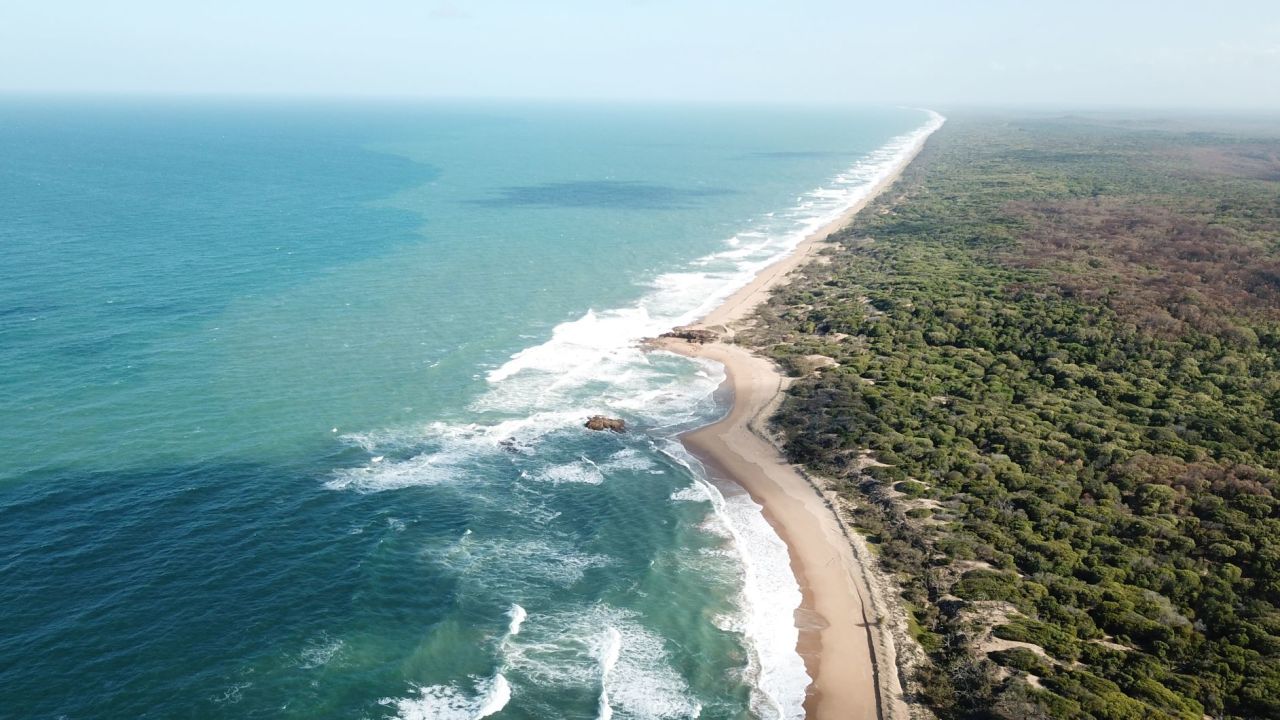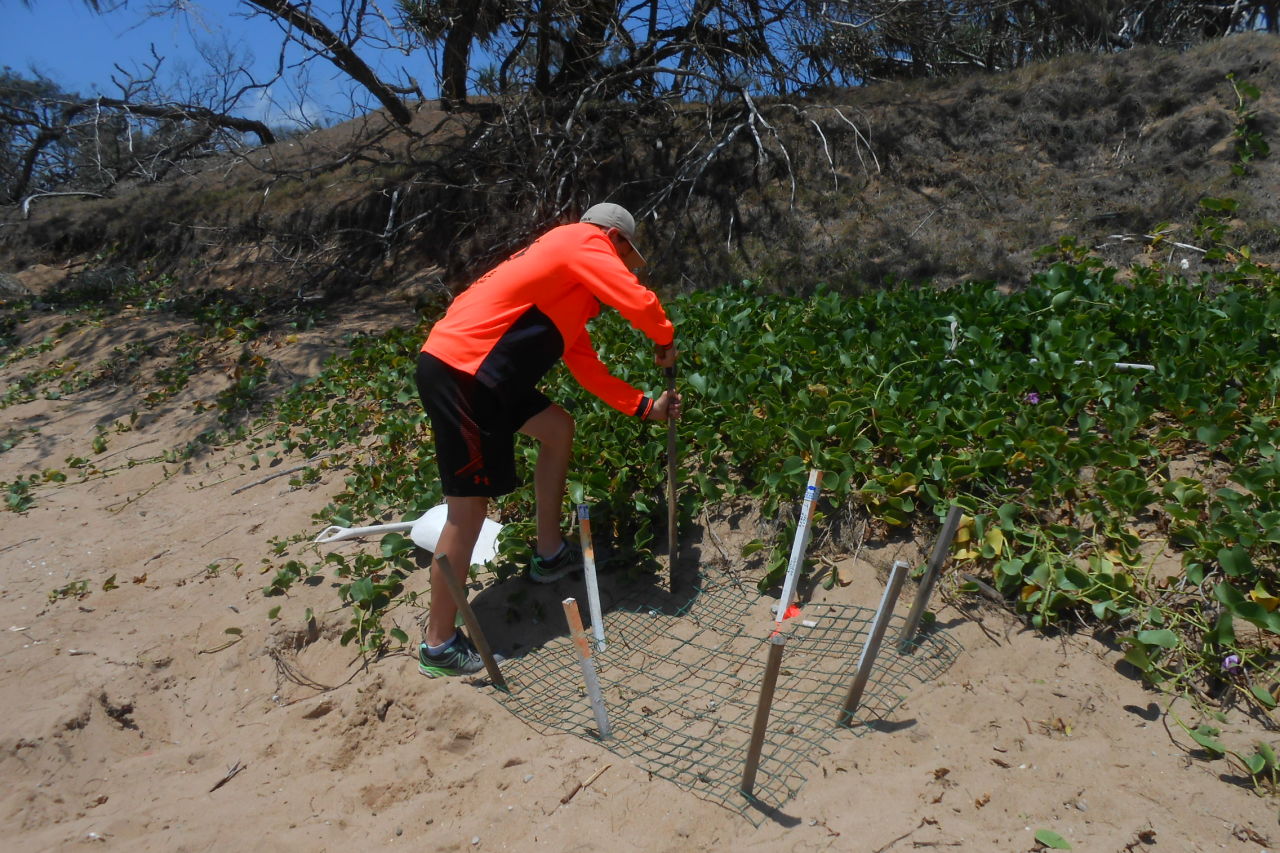Project News ·
Citizen Science project wrap: Stories of impact
Wreck Rock Turtle Monitoring Project
Impact Summary (Project funded mid-2019 and wrapped mid-2021)
Wreck Rock Beach is the second largest mainland nesting site for loggerheads in the South Pacific Ocean. Through the Wreck Rock Turtle Monitoring Project, Turtle Care Volunteers Queensland Inc. engaged volunteers to monitor population information provided to managers to implement response strategies to mitigate the negative impacts of climate and weather factors and other threats such as predation, with the goal to increase the numbers of hatchlings from this site.

Project Impact Story
At the southern end of the Great Barrier Reef sits Wreck Rock, an isolated, undeveloped, and pristine stretch of coastline nestled between Agnes Water and Bundaberg. Treasured by locals, Wreck Rock beaches support one of the five largest concentrations of nesting Loggerhead turtles in eastern Australia.
Nev and Bev McLachlan have been leading the Wreck Rock Turtle Care volunteer monitoring program for more than 40 years, dedicated to understanding and protecting this important nesting ground. More than 30 volunteers generously gave up their time to help during the 2019 and 2020 turtle nesting seasons, lending a hand with everything from catering to beach patrols of the 23km stretch of Wreck Rock.

Nev and Bev McLachlan pictured here at the Wreck Rock Turtle Monitoring Project base camp. Credit: Nev and Bev McLachlan.
Shares Nev, on what drives him to champion the project:
'On my first visit to Wreck Rock, next to nothing was known about the extent of turtle nesting in the area and I had no idea of the impact it would have on my life. On discovering that four species were nesting there I couldn’t wait to return the next season and the next. Now that so much data has been collected and become an important part of the total picture for the South Pacific region, we just want to try to maintain the input into the database after monitoring for 40 plus years without missing one. We are still seeing turtles that are returning after 30 plus seasons and we’re sure that many of the offspring from turtles we’ve tagged over that time are now returning to lay their eggs. We want to contribute to ensure that future generations of turtles will be nesting at Wreck Rock for all future generations of our families to appreciate.'
A loggerhead turtle nests on Wreck Rock beach, captured on video as part of the Wreck Rock Turtle Monitoring Project. Credit: Nev and Bev McLachlan.
Monitoring teams covered more than 30,000 kilometres over the two nesting seasons, patrolling the beach at night to monitor and record turtle nesting and hatching activity, and returning each day to install and maintain predator exclusion devices, photograph and record activity.
More than 400 egg clutches were protected or saved during the nesting seasons, through keeping out predators such as foxes and goannas or moving nests to higher ground if they were at risk of inundation.

A turtle nest is being protected with predator exclusion fencing. Credit: Bev and Nev McLachlan
Maintaining long-term records is hugely valuable, as it helps drive the change needed to address evolving local threats to turtle populations. For example, the team observed increasing pressure on turtle nesting habitat from beach-going vehicle traffic in recent years. As a result of community action and Nev and Bev’s long-term records, the jurisdiction of the beach esplanade has recently shifted to the state government, empowering greater regulatory action on beach activities. Vehicles are now excluded from the beach at one end of the national park – with Turtle Care one of the many organisations advocating for improved protection of this important turtle breeding location.
‘We’ve been working to ensure volunteers understand that the health of the turtle population reflects the health of the Reef - that was enlightening for our volunteers. It didn’t change their amazing work ethic or attitude, but they are prouder of their work, as they can see the value of their work in the bigger picture.’
The team’s efforts are now extending to exploring more ways to empower the community to lend a hand.
‘We’ve seen an increased awareness and changing attitudes from visitors, tourists and campers who now have a better understanding and a want to do something about it – such as helping to clean up the beaches.’
Volunteers count turtles laid at a nest as part of Wreck Rock Turtle Monitoring Project.
The Wreck Rock Turtle Care volunteer monitoring program is loved by many with volunteers continuing to return year after year. Nev and Bev are thrilled that multiple generations of families now take part in the conservation effort.
'During our first decade of monitoring at Wreck Rock we knew nothing about networking for volunteers so our helpers were sourced from our own family and friends.
During the 70’s and 80’s Bev and I had two children who spent every summer at Wreck Rock until after they left school. While they were very young their grandparents came to Wreck Rock to babysit and assist with beach patrols. Our son Ben still volunteers every season using his annual leave. When our daughter Jaylene left school she earned a degree in marine and wildlife biology and was head hunted to assist Dr. Col Limpus as part of the Threatened Species Unit.
Another two of our original team members have continued volunteering for over 30 years and have brought firstly their partners and subsequently their children into the team. We have to acknowledge the dedication by Peter, Michelle, Josh and Steph Rabe; Noel, Donna, Ashleigh and Brittany Brown.’
Nicole Lawrence shared the impact her volunteering experience.
‘My family and I have stayed at Wreck Rock three times now. My husband and I are divers, so we have encountered turtles before, but being able to introduce them to our young children really helped to ignite a passion in all of us to strive toward their protection. We have had such memorable experiences that have left a long-lasting impression on us all.
After our first visit, I banned plastic bag use in our house. A small token, but an important step toward recognising that our actions on land have an impact on marine life.
After our second visit, both of our children learned how to dive due to their increasing passion for marine animals. My husband keeps a track of activities via the Facebook page and we love knowing how things are going with the turtles at Wreck Rock.
On our third visit, I was able to talk to Nev more about projects to help protect turtle nests from predation by goannas. I hope that I can use my connections in the research community to help if I can.’
Hatchlings enter the ocean from Wreck Rock Beach. Credit: Nev and Bev McLachlan of Wreck Rock Turtle Monitoring Project.
The Turtle Care Volunteers Queensland Volunteer Wreck Rock project was funded by the partnership between the Australian Government’s Reef Trust and the Great Barrier Reef Foundation.
#Related

Project News ·
Community at the forefront of Reef water quality protection

Project News ·


